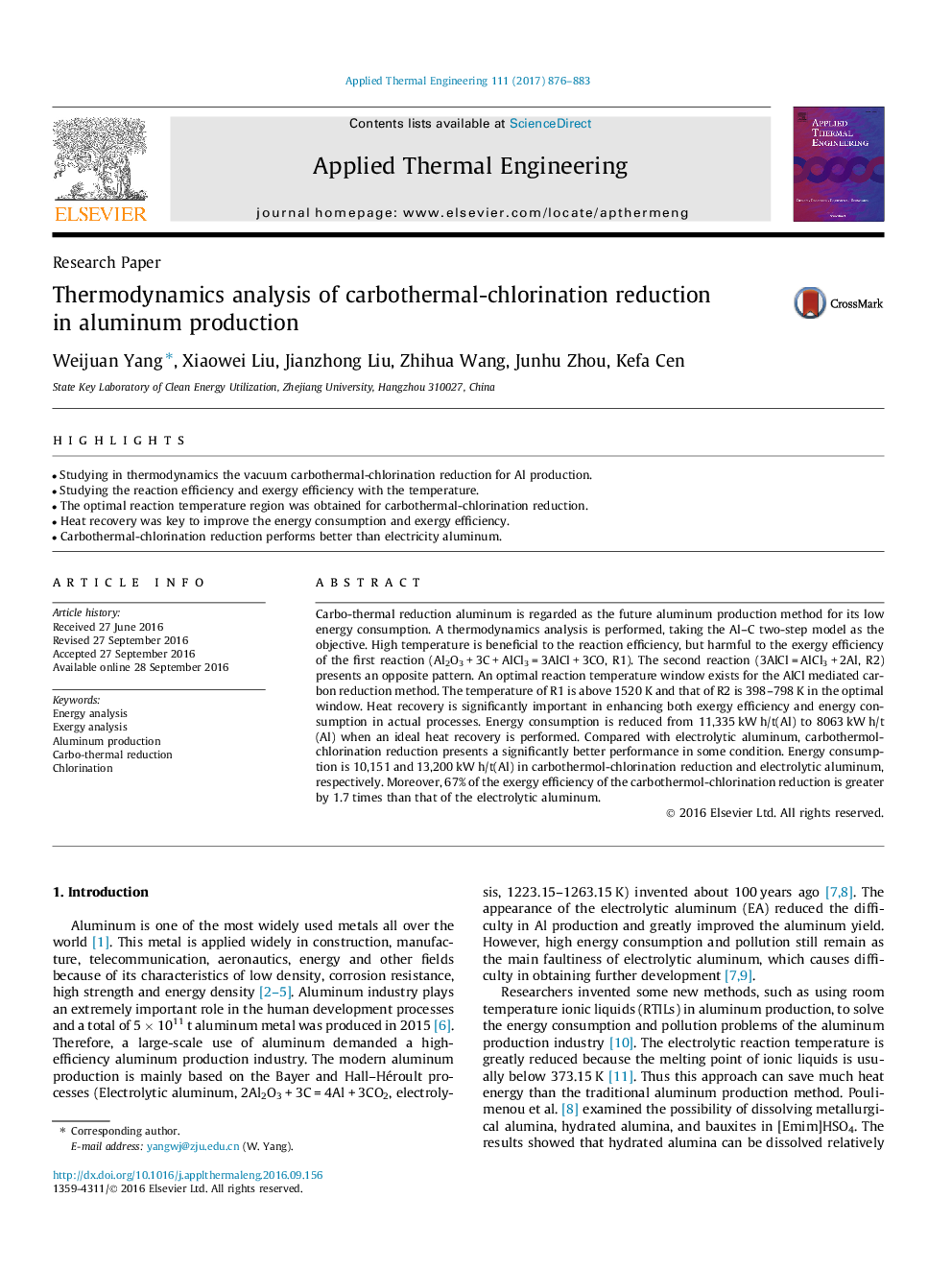| Article ID | Journal | Published Year | Pages | File Type |
|---|---|---|---|---|
| 4992170 | Applied Thermal Engineering | 2017 | 8 Pages |
Abstract
Carbo-thermal reduction aluminum is regarded as the future aluminum production method for its low energy consumption. A thermodynamics analysis is performed, taking the Al-C two-step model as the objective. High temperature is beneficial to the reaction efficiency, but harmful to the exergy efficiency of the first reaction (Al2O3 + 3C + AlCl3 = 3AlCl + 3CO, R1). The second reaction (3AlCl = AlCl3 + 2Al, R2) presents an opposite pattern. An optimal reaction temperature window exists for the AlCl mediated carbon reduction method. The temperature of R1 is above 1520 K and that of R2 is 398-798 K in the optimal window. Heat recovery is significantly important in enhancing both exergy efficiency and energy consumption in actual processes. Energy consumption is reduced from 11,335 kW h/t(Al) to 8063 kW h/t(Al) when an ideal heat recovery is performed. Compared with electrolytic aluminum, carbothermol-chlorination reduction presents a significantly better performance in some condition. Energy consumption is 10,151 and 13,200 kW h/t(Al) in carbothermol-chlorination reduction and electrolytic aluminum, respectively. Moreover, 67% of the exergy efficiency of the carbothermol-chlorination reduction is greater by 1.7 times than that of the electrolytic aluminum.
Related Topics
Physical Sciences and Engineering
Chemical Engineering
Fluid Flow and Transfer Processes
Authors
Weijuan Yang, Xiaowei Liu, Jianzhong Liu, Zhihua Wang, Junhu Zhou, Kefa Cen,
